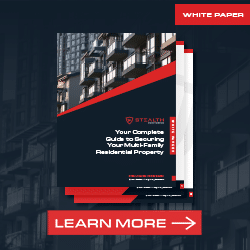Before you build or remodel your next apartment complex, you may want to think about who you want to attract. RENTCafé and Apartment List
share surprising data that few ever expected to see. The fastest-growing segment of renters? High-income earners.
The Growing Number of High-Income Renters
Just how many people who qualify as high-income earners rent? RENTCafé did the math and says this group comprises 2.1 million renters. This is a leap from 10 years earlier when fewer than 800,000 renters were high-wage earners. To meet RENTCafé’s definition of a high-income household requires earning at least $150,000 per year.
In its own study, Apartment List also reports similar numbers. It says there are about 2 million high-income renters. But the similarities between the two reports stop here. Apartment List says the segment grew by 48 percent between 2008 and 2017.
To qualify as a high-income household on Apartment List is $100,000, a bit lower than RENTCafé’s requirement. Its data comes from U.S. Census Bureau data. Apartment List’s article references ACS microdata from the IPUMS-USA database.
In terms of which cities see the greatest amount of growth of high-earners renting, the two overlap on only three cities. (Bolded.)
Apartment List cities with the highest increases:
- Denver, CO
- Austin, TX
- Oklahoma City, OK
- New Orleans, LA
- Memphis, TN
- Raleigh, NC
- Minneapolis, MN
- Nashville, TN
- Seattle, WA
- Portland, OR
RENTCafé cities showing the most growth:
- Seattle, WA
- Charlotte, SC
- Baltimore, MD
- Fort Worth, TX
- San Jose, CA
- Portland, OR
- Indianapolis, IN
- Philadelphia, PA
- Louisville, KY
- Denver, CO
Why the Growing Number of High-Earner Renters?
Despite the differences in the two reports, the message remains clear. More high-income earners are renting. Some rent because apartments are closer to their workplace. It may also have nearby public transportation.
Many cities are developing walking communities where residents can find everything they need within walking distance. Some of these up-and-coming communities fit rich renters’ lifestyles. Even with a higher paycheck, homes in some cities cost more than the renters will pay. Instead, they maximize their income by opting to rent.
The recession in 2008 led to a drop in single-family home sales and an increase in foreclosures. Investors converted these homes into rentals. This allowed higher-wage earners to find a larger place to live without the burden and barriers of home ownership.
Some of these high-wage earners still pay student loan debt. Couple that with stricter mortgage loan requirements and that makes renting more attractive. Furthermore, some don’t have enough savings to make a large enough down payment on a home.
A few years later, multi-family residential construction picked up, quadrupling between 2010 and 2017. Technology and the sharing economy also drive this segment of renters to live in urban centers. Finally, many of these multifamily residential construction projects targeted higher incomes by adding amenities.
One apartment amenity to provide is security. National Crime Prevention Council (NCPC) finds that multifamily housing residents have an 85 percent greater chance of burglary than single-family homes.
When you invest in the right security technology, you can see a fast ROI while giving your tenants what they want: peace of mind. To learn about apartment security solutions, please contact us.



